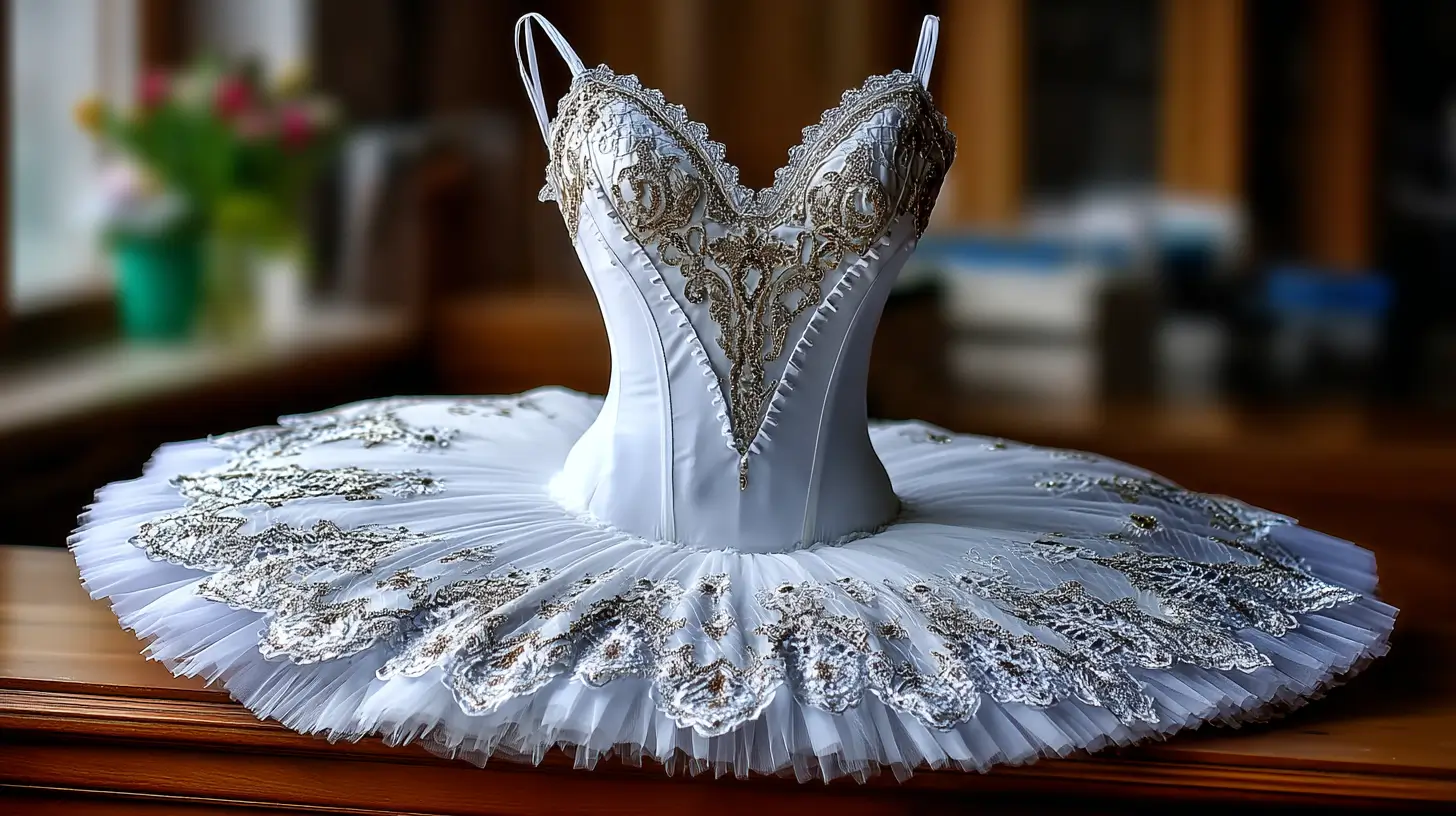Do you need to know how to care for a ballet tutu? This guide offers essential tips on washing, drying, storing, and caring for delicate fabrics. Keep your tutu in perfect condition with our easy-to-follow advice.
Key Takeaways
- Pre-washing tutus in cold water with mild detergent helps maintain their shape and prevents color fading.
- Dry cleaning is recommended for intricate tutus with embellishments, but it can soften the fabric and potentially damage decorations.
- Air drying and proper storage, either flat or hanging upside down, are essential for preserving a tutu’s shape and preventing moisture-related damage.
Art de Podcast
| Care Area | DO | DON’T | Why It Matters |
|---|---|---|---|
| 1. Cleaning | • Spot-clean smudges with a soft cloth and mild detergent. • Hand-wash only the gusset or brief in cool water. • Let professionals handle ornate, beaded bodices. | • Submerge the whole skirt. • Wring or twist netting. • Send to a generic dry cleaner—chemicals can break stiffeners. | Preserves color, prevents layer distortion, and protects embellishments. |
| 2. Drying & De-wrinkling | • Air-dry upside-down on a wide hanger or towel. • Fluff layers gently while damp. • Use a garment steamer 15–20 cm away to release wrinkles. | • Use tumble-dryers or direct irons (high heat melts nylon net). | Keeps the “pancake” lift, avoids heat damage, and restores volume. |
| 3. Storage (between uses) | • Lay flat or hang upside-down in a breathable tutu bag. • Cover with a cotton sheet—no plastic. • Store in a cool, dry, dark place. | • Fold or stack items on top of each other. • Exposed to sunlight or damp basements. | Prevents “teacupping,” mildew, and fading. |
| 4. Travel & Transport | • Use a rigid, gusseted tutu-specific garment bag. • For flights, fold the skirt in on itself once (a “taco” fold) and carry it on if allowed. • Upon arrival, fluff and steam. | • Check your luggage loosely without protection. • Pack liquids in the same compartment. | Minimises crushing and quick recovery on tour. |
| 5. Backstage Handling | • Wash or sanitise your hands before touching the skirt. • Apply hairspray, perfume, or body glitter before donning a costume. | • Spray products while dressed— overspray leaves a sticky film that traps dirt. | Reduces grime build-up and keeps the net crisp. |
| 6. Ongoing Maintenance | • Inspect seams, hooks, and tacking after every show. • Restarch droopy edges with spray starch or light sizing. • Carry stain-remover wipes for quick fixes. | • Delay repairs—small rips spread fast. • Store when damp. | Extends life span and keeps the tutu looking stage-fresh. |
Pre-Washing Techniques
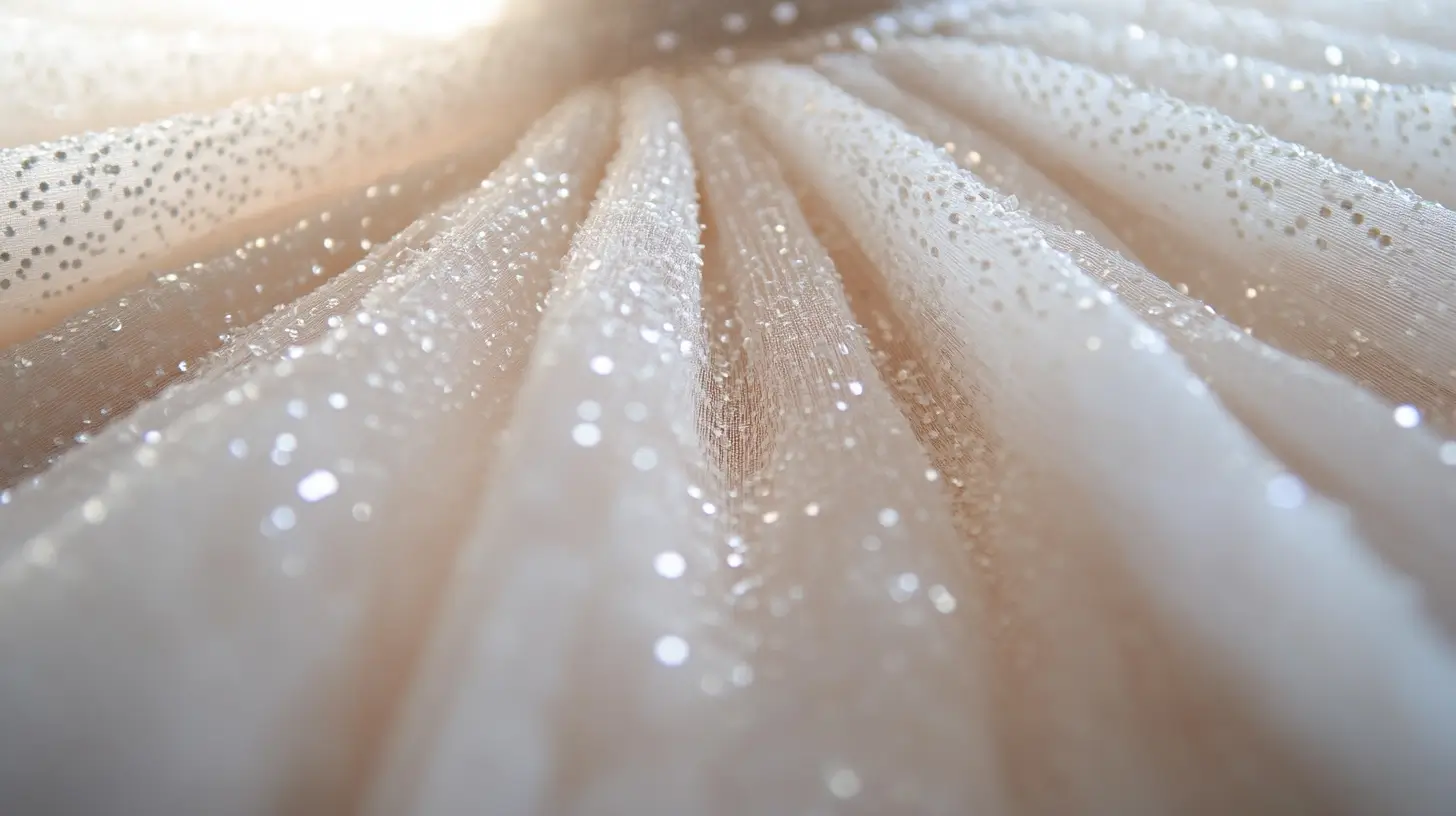
Pre-washing your tutu helps ensure its durability and prevents future issues during wear. This step allows fabrics to shrink beforehand, which is crucial for maintaining the shape and fit of your tutu. Using cold water for washing tutus helps avoid color fading and fabric alterations.
Gently soak the tutu in cold water with a mild detergent for 10-15 minutes to maintain its color and fabric integrity.
Although most fabrics can be machine-washed, delicate nets and cotton tulle are typically not pre-washed to preserve their structure. Check the washability of colored fabrics beforehand to avoid damage.
Dry Cleaning Options
For intricate and embellished tutus, dry cleaning is often the best option. Specialized solvents preserve the integrity and vibrancy of tutus, particularly those with sequins, beads, and delicate decorations. Steel boning is crucial in maintaining both the structure and smooth appearance of ballet costumes, making professional dry cleaning essential for these elements. Professional dry cleaning effectively removes oils and stains that hand washing may not eliminate.
Classical tutus, often made from fragile materials, benefit significantly from specialized dry cleaning to maintain their structure and appearance. However, it’s important to note that dry cleaning can soften tulle, which might impact the overall texture of the tutu. Additionally, the glue used for embellishments can soften during the dry-cleaning process, potentially causing them to detach. Therefore, weighing the benefits and risks before deciding to dry clean your tutu is crucial.
Dry cleaning is advisable for tutus with heavy embroidery or sequins, as conventional washing may cause damage. Be cautious with sequins, as dry-cleaning solvents can melt or discolor them. Consult a professional cleaner experienced in caring for delicate costumes for the best care.
Hand Washing Your Tutu

Before washing, assess the fabric to determine the safest method for a few tutu skirts. Tutu skirts require special care, including selecting the right materials and using the correct cleaning methods to maintain their appearance and longevity. Hand washing allows for gentle cleaning, reducing the risk of damage. Fill a bathtub or large basin with cold water, add a mild detergent, and gently agitate the water to create suds before submerging the tutu.
After soaking the skirt or tutu for 10-15 minutes, gently press out the water without wringing or twisting the fabric. Rinse thoroughly with cool water to remove any detergent residue, which can damage the fabric if left behind.
Lay the tutu flat on a clean towel and roll it up to remove excess water without causing it to distort. Once the excess water is removed, lay the tutu flat on a dry towel or hang it upside down to air dry. Ensure it is completely air-dried before storage to maintain its shape and prevent damage.
Removing Sweat Stains and Makeup
Sweat stains and makeup can cause long-term harm to a tutu. Use a mild detergent and a soft cloth to spot-clean these stains. Gently rub and dab the affected area, avoiding harsh rubbing to prevent damage to the delicate fabric.
Repeat the spot-cleaning process for stubborn stains. Ensure the detergent is thoroughly rinsed out to prevent residue from causing further damage. Regular spot cleaning helps maintain the tutu’s appearance and prolong its lifespan.
Air Drying and Storing
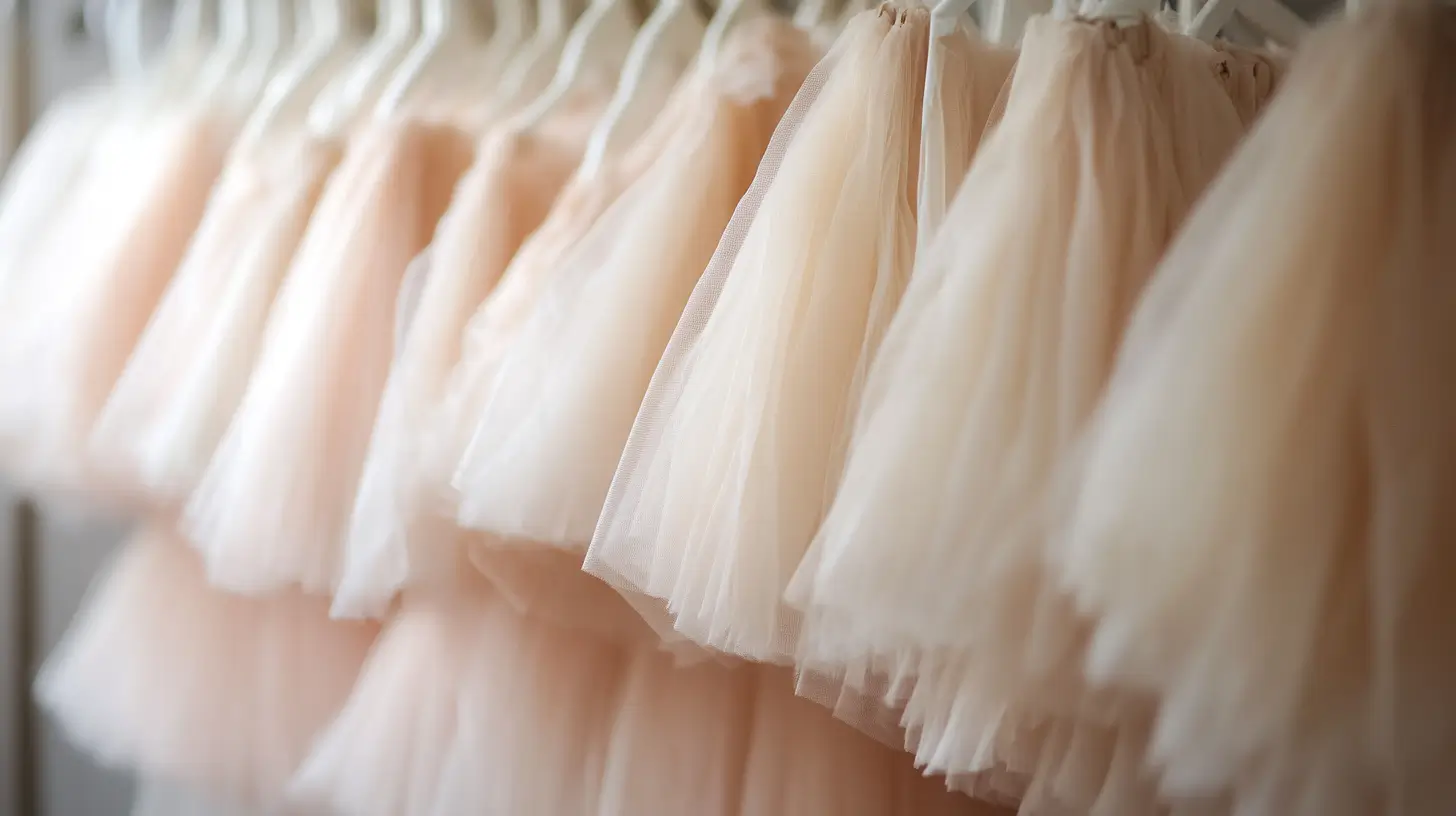
Air drying is the best and safest method for drying a tutu, as it avoids the risks associated with heat drying. After cleaning, whether by hand or spot cleaning, let the tutu air dry completely before storing it to prevent moisture-related damage or shape distortion.
Classical tutus should be stored flat or hung upside down to preserve shape. Using hang loops can prevent damage from hangers or clip marks. Additionally, breathable storage containers, such as fabric garment bags or drum cases, protect a classical tutu from dust while allowing proper air circulation.
For multiple classical tutus, a non-air-tight bass drum case can effectively stack romantic tutus without causing damage. Following these air drying and storage tips ensures your classical tutu always remains in excellent condition and is ready for the next performance.
Handling Delicate Fabrics
Delicate fabrics, such as silk and certain types of nylon, need special care when washing to maintain their appearance and integrity. Natural fabrics like silk may require more careful handling and are generally not washed frequently due to their delicate nature. Professional dry cleaning is often the best option for these dry, cleanable fabrics, as it prevents damage from washing.
Opt for dry cleaning if you have any doubts about the durability of a worn or delicate fabric. Most tutus made from nylon net or cotton tulle are washable and do not typically fade or bleed, making them easier to care for at home. However, handle these materials with care to avoid accidental damage during cleaning.
By understanding the specific needs of each fabric, you can make informed decisions about whether to hand wash the washable part or seek professional cleaning services.
Maintaining Embellishments
Embellishments such as sequins, beads, and rhinestones add sparkle and elegance to tutus but also require careful handling to maintain their appearance. Understanding the materials and attachment methods used for these embellishments is crucial to prevent damage during cleaning. Romantic tutus, which often feature more intricate designs, need extra care to preserve their decorative elements.
Washing can restore the shine of well-attached sequins and beads, but glued items require more caution. If embellishments are sewn with a single thread, a broken thread could result in losing multiple beads or satin at once. Inspect the embellishments before cleaning and handle them gently to maintain their integrity.
Removing Wrinkles
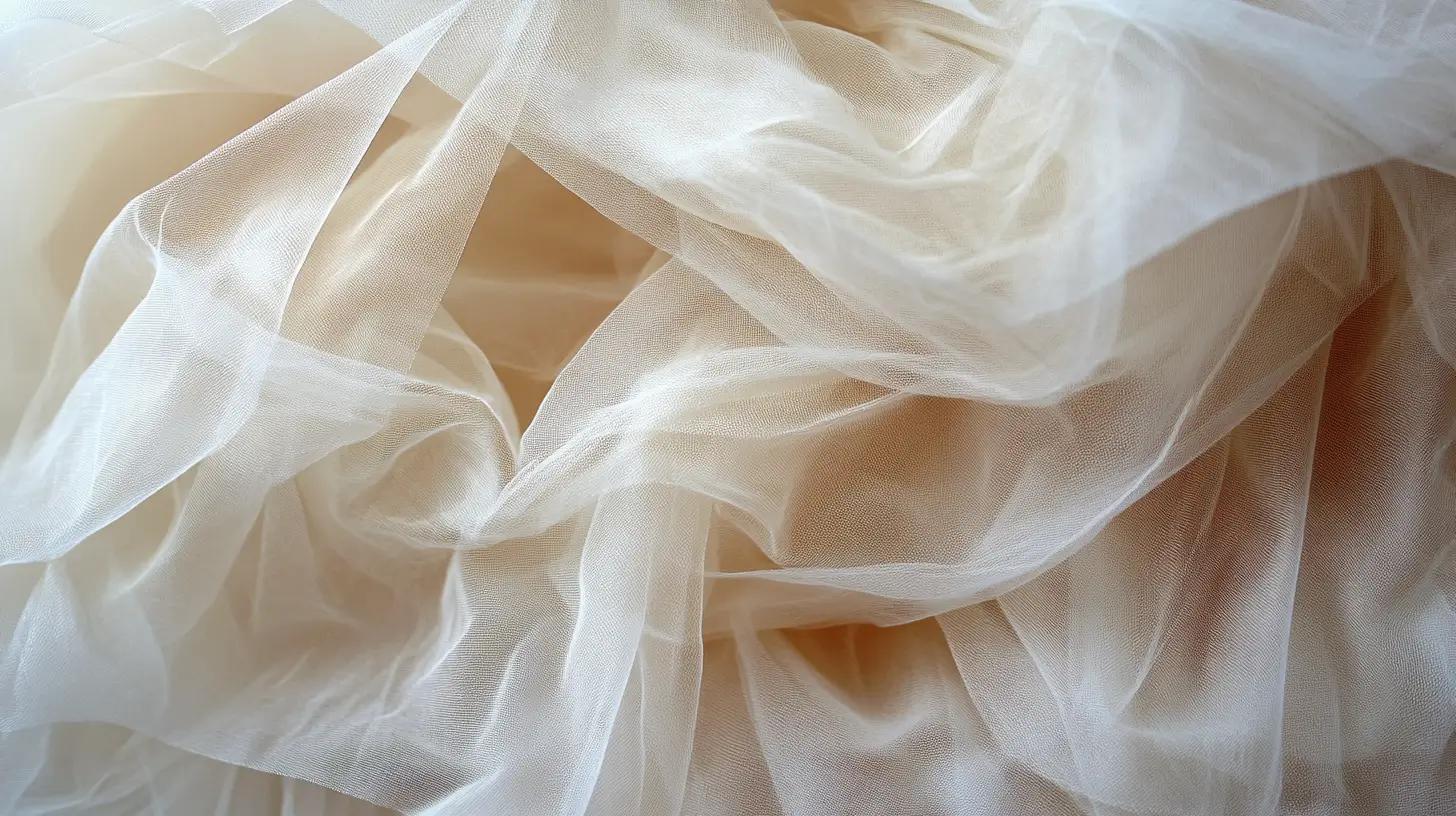
Wrinkles can detract from the polished look of a tutu, but they can be removed effectively with steam. Steam is the best method to remove wrinkles without applying heat directly to the fabric. One effective approach is to hang the tutu upside down in a bathroom with hot water running, allowing the steam to relax the fibers.
Alternatively, use a handheld steamer from a distance of 1 to 2 inches to smooth out wrinkles in the damp tulle. This method relaxes the tulle fibers, preventing any damage that could occur from using an iron. Avoid getting the steamer too close to the fabric to prevent damage.
Protecting the Shape
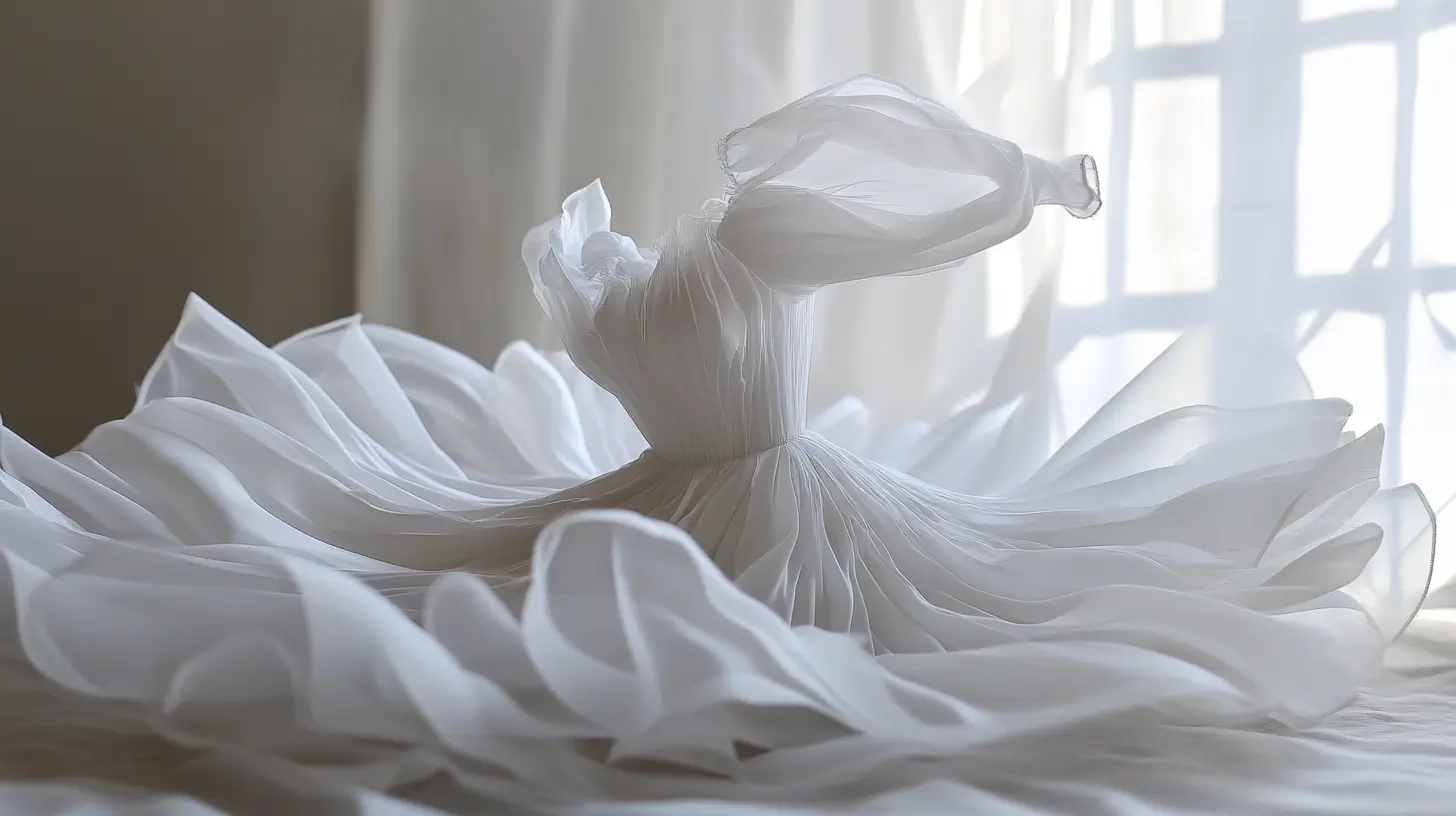
Maintaining the shape of a classical tutu well is crucial for its performance-ready appearance. Store classical and romantic tutus either flat or hanging upside down. Hanging them upside down or in a standard garment is also acceptable for romantic tutus.
Using hang loops while storing tutus can prevent damage from hanger marks. Additionally, a breathable storage container, such as a tutu-specific garment bag, protects tutus from dust and allows for proper air circulation. Make sure the tutu is completely dry before storage to avoid moisture-related damage.
Following these tips helps maintain the classic flat shape of your tutu skirt, ensuring it remains performance-ready for years to come.
Resume
Caring for a ballet tutu involves meticulous steps, from pre-washing to storing. Each stage is crucial for preserving the tutu’s beauty and longevity. Following the guidelines outlined in this article, you can ensure your tutu remains pristine and ready for every performance.
Remember, proper care not only enhances the appearance of your tutu but also extends its lifespan, allowing you to focus on your art without worrying about your costume. Treat your tutu with the care it deserves, and it will continue to shine as brightly as your performance on stage.
Frequently Asked Questions
Can I machine wash my tutu?
It’s best to avoid machine washing your tutu, as delicate fabrics and embellishments can be damaged. Opt for hand washing or professional dry cleaning instead.
How do I remove makeup stains from my tutu?
To remove makeup stains from your tutu, gently spot-clean the affected areas with a mild detergent and a soft cloth. Ensure you rinse your hands thoroughly to eliminate any residue.
Should I pre-wash my tutu before wearing it?
Yes, pre-washing your skirt or tutu is advisable as it can help prevent future issues like shrinking. Use cold water and a mild detergent for optimal wash results.
How should I store my tutu to maintain its shape?
To maintain the shape of your tutu, store it flat, dry clean it, or hang it upside down in a breathable storage container with cool air. This method protects against dust while allowing for air circulation.
Can I use an iron to remove wrinkles from my tutu?
To effectively remove wrinkles from your tutu, use steam instead of direct heat. You can do this with a handheld steamer or by hanging it in a steamy bathroom. This method preserves the fabric and shape of your tutu.

